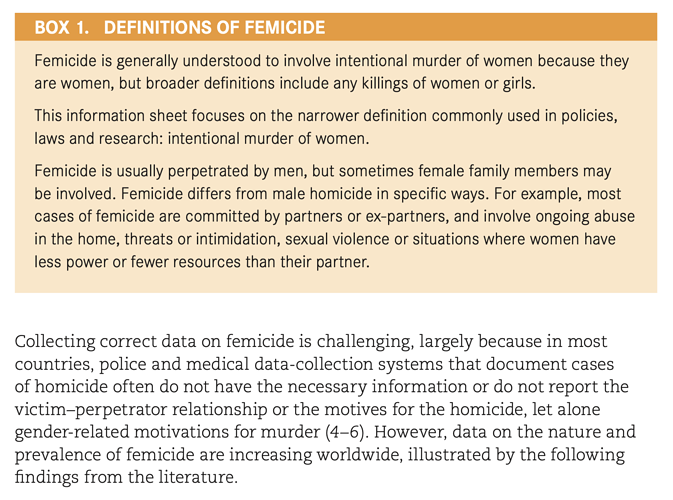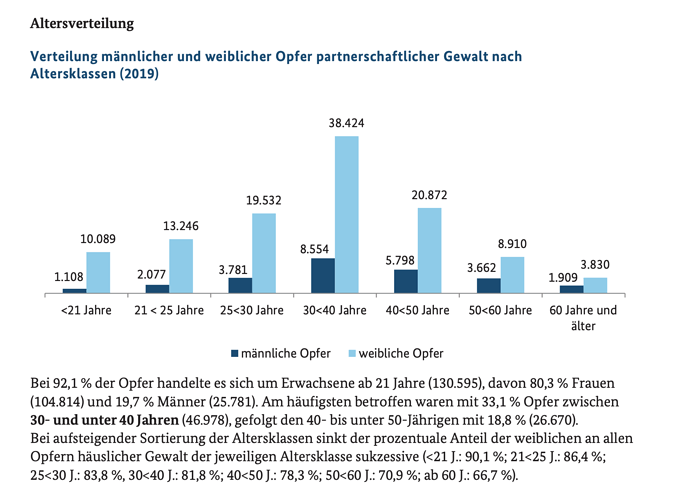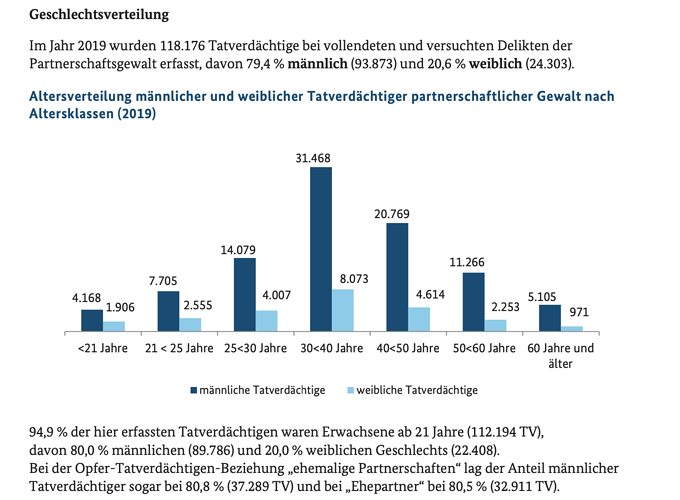- WHO Bericht, 2012: WHO - Understanding and addressing violence against women: Femicide
- Artikel 2020: Identifying femicide locally and globally: Understanding the utility and accessibility of sex/gender-related motives and indicators mit Tabellen
Results
There were significant associations among SGRMIs and perpetrator–victim gender com- binations (see Table 2).8 Recall that an SGRMI would be a good indicator of femicide if it was significantly more likely to be present in male-perpetrated/female-victim homi- cide compared to other perpetrator–victim combinations. Pre-incident and incident char- acteristics demonstrated the most variation across perpetrator–victim gender combinations with male-on-female killings having significantly higher proportions of potential SGRMIs compared to other killings. Specifically, the proportion of pre-incident charac- teristics more common among male-on-female homicides were prior police contact (42%), recent separation (38%) prior threats against victims (65%), estrangement (25%), intimate/familial relationships (82%), and premeditation (60%). With respect to the inci- dent itself, more common characteristics for male-on-female homicide were femicidal motive (38%), sexual assault (19%), mutilation (7%), excessive force (38%), body found nude (23%), proximate methods (e.g. beating; 64%), multiple methods (18%), and femi- cidal contexts (57%). Other variables did not differ significantly in male-on-female kill- ings or were more common among the other types of homicide.
Results in Table 3 show the average number of potential SGRMIs is also significantly higher, on average, in male-on-female killings (8.126) compared to other homicides, consistent with the expected increased presence of SGRMIs in killings most closely aligned with femicide. As such, the SGRMIs vary across the gender combinations with male-perpetrated/female-victim killings being the most distinct, supporting their poten- tial utility in differentiating femicide and other homicides.
Given the above, then, how accessible are the SGRMIs from traditional data sources? Table 4 shows 39 of the 52 SGRMIs that were available for examination in the current study, representing 75% of those identified in the protocol. This demonstrates one level of accessibility: the variables were included in the study and information was available for at least some cases from the data sources accessed. However, the more valid indicator of accessibility – how often information was available for each SGRMI – proved to be weak in the data examined for the total sample as well as across perpetrator–victim com- binations. Of specific interest, given the study focus, was available information for male- perpetrator/female-victim killings. Missing information ranged from a low of 3% for victim age to a high of 96% for perpetrator history of child abuse. In other words, infor- mation on age of victim was almost always available, but information on perpetrator history of child abuse was seldom available.
- Aufsatz in Publikation 2020: Transphobic Femicide: An Intersectional Perspective
- hier sind noch mal Statistiken zu den USA und transfeindliche Morde an Frauen
- zu den Zahlen gibt es u.A. Monitorings
- hier ist ebenso eine Herleitung über den Begriff Femizid drin - ich finde es entscheidend, dass ebenso trans Frauen berücksichtigt werden









